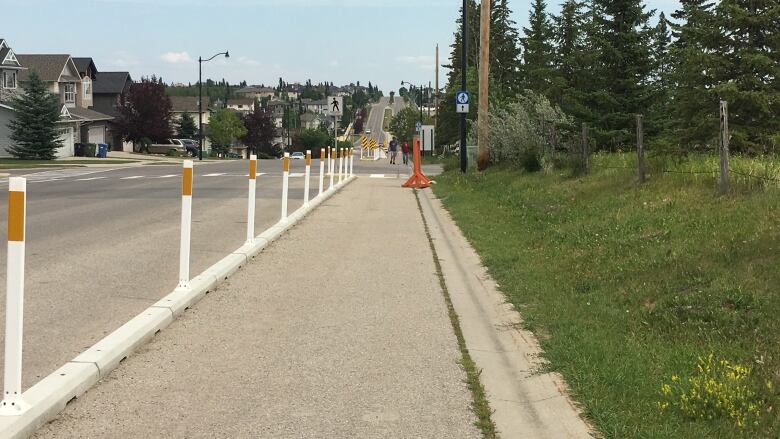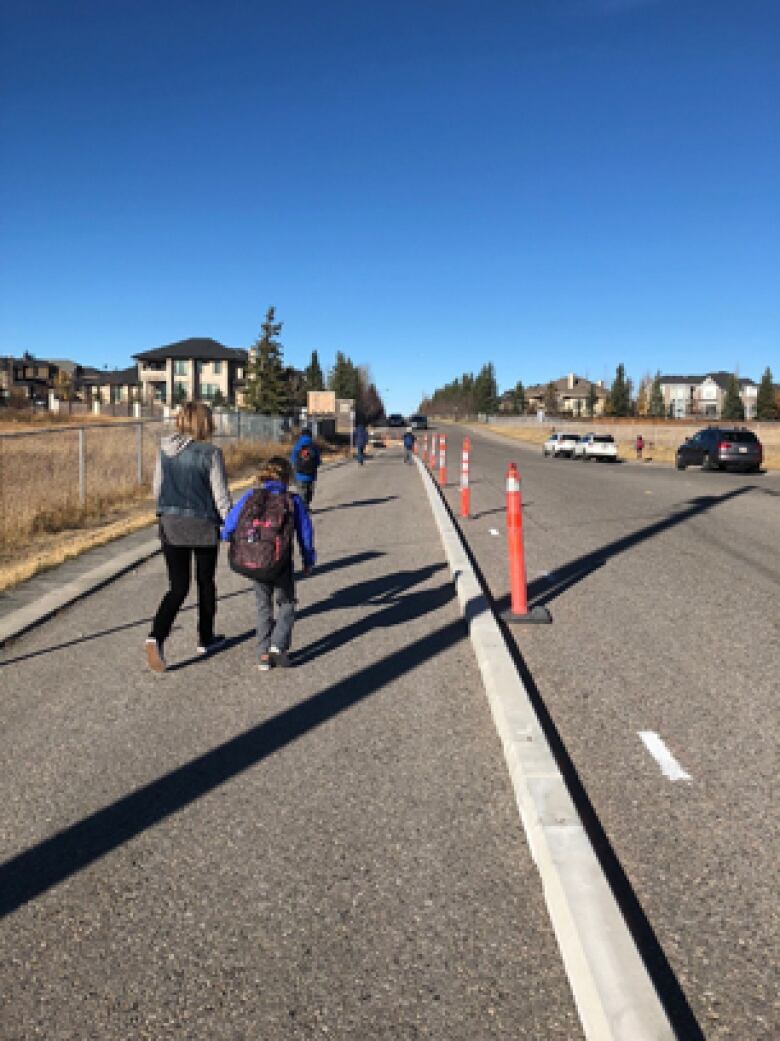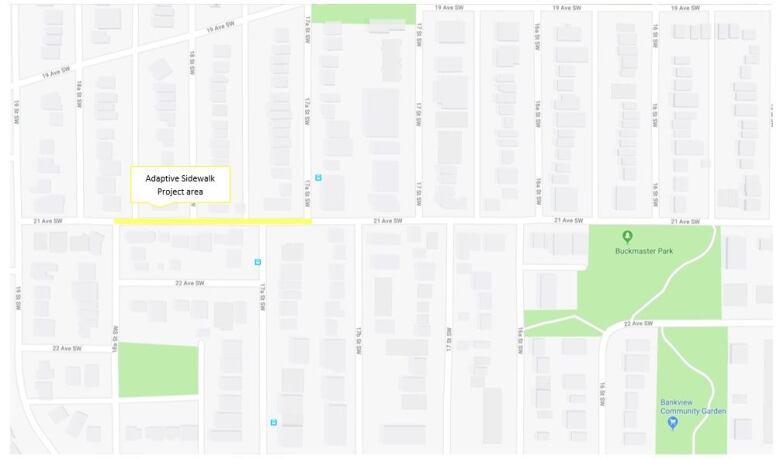Where do you walk when there's no sidewalk? City touts 'adaptive sidewalks' pilot project
Temporary sidewalks help end roadway confusion, provide safe space for walkers, cyclists

The City of Calgary hopes to make pedestrians safer with something called "adaptive sidewalks,"safe spaces to walk where there is no traditional sidewalk, and where they may decide to build one in the future.
Ward 9Coun. Gian-Carlo Carra is a proponent of the idea.
"Sometimes we have overly wide streets which seem to sometimes encourage people to think that there's two lanes of traffic when there's actually one, and sometimes those places don't actually have sidewalks, and in those places we're laying down temporary concrete cushions," Carra told the Calgary Eyeopener.
"The idea is that you lay out on the road a pathway for people to walk. You actually narrow the road."
Carra says after a period of testing, if the location seems to favour a sidewalk, it can be added later.
"If it works fine, then when we have the budget in place we replace it with an actual curb and gutter and introduce a sidewalk," he said. "But that's down the road. Right now, there's a sort of triage and a quick and dirty way to go, and we can we can get the width and all of that right."
Carra calls it a road diet, a narrowing of an existing roadway, and he says it can also improve safety, but only in places where the road is wider than it needs to be for a single lane.
"There's a lot of streets in this city that the roads indicate to the driver that they've got two lanes when in fact it's only a one-lane road, and it's in those environments where we see really dangerous driving behavior someone slows down to turn left, someone decides to whip around them on the right. That's when bad things happen, especially when there isn't an actual lane there," Carra said.
"So in places where we indicate to the driver that there's actually only one lane there, and places where we need sidewalks,we're doing this adaptive sidewalk program in the slow march towards actually delivering sidewalks where they're needed."
Signage is installed to mark where adaptive sidewalks are, so that drivers know where they can drive or park. In some cases, traffic calming curbs are installed along with the concrete curbs.
If you think it sounds like a bike lane, it does, and Carra says that's OK; cyclists will be safer with a place to get out of traffic.
The city is planning a pilot project in Bankview, on 21st Avenue between 18A Street and 17A Street S.W., an area that has become "more walkable" over the years, but where there may be gaps in the existing sidewalk.
"There are streets in Bankview which do not have sidewalks, and there are significant interruptions in the pedestrian flow where people are walking down the sidewalk and then you have two blocks without a sidewalk," he said. "It's really about, where do we have pedestrian volumes that are all of a sudden cut off by having no sidewalk?"

Carra, a former urban planner, says it's frustrating to look back at how someCalgary neighbourhoods were built, but exciting to plan for a more bike and pedestrian friendly city in the future.
"If you want me to put my urban planner hat on, there's tears rolling down my cheeks at so many of the things that we did back in the day," he said. "I'm happy to be part of a city-building regime that is legitimately changing the game, I think for the better it's an exciting time to be city building."

Carra says the temporary curbs allow city planners to get the dimensions just right as they test out the sidewalks. Speed limits may also be adjusted, and it's all part of striking a balance.
"Accommodating parking is also an important consideration for neighbourhoods, and in places where it's just absolutely too narrow to do all things you've got to basically decide what gets priority," Carra said.
"Is it another lane of traffic? Is it a parking lane? Is it a sidewalk? And we're going to have to make that call on a case-by-case basis and that's another reason why a first-step, temporary approach makes sense."
With files fromthe Calgary Eyeopener.












_(720p).jpg)


 OFFICIAL HD MUSIC VIDEO.jpg)
.jpg)



























































































